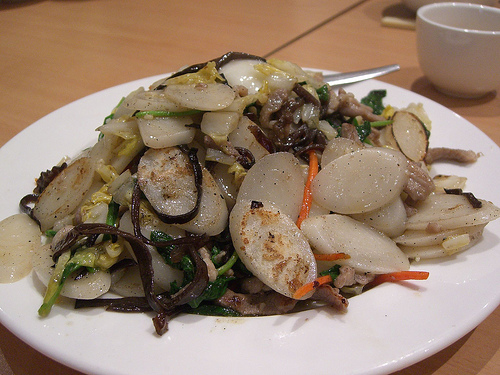|
Niangao
''Nian gao'' (年糕; also ''niangao''; ''nin4 gou1'' in Cantonese), sometimes translated as year cake or New Year cake or Chinese New Year's cake, is a food prepared from glutinous rice flour and consumed in Chinese cuisine. It is also simply known as "rice cake". While it can be eaten all year round, traditionally it is most popular during the Chinese New Year. It is considered good luck to eat ''nian gao'' during this time of the year because ''nian gao'' (年糕) is a homonym for "higher year" or "grow every year" (年高), which means "a more prosperous year". The character 年 is literally translated as "year", and the character 糕 (''gāo'') is literally translated as "cake" and is identical in sound to the character 高, meaning "tall" or "high". ''Nian gao'' (年糕) also has the exact homonym for "sticky cake" (粘糕); the character 粘 (''nián''), meaning "sticky". This sticky sweet snack was believed to be an offering to the Kitchen God, with the aim that his mo ... [...More Info...] [...Related Items...] OR: [Wikipedia] [Google] [Baidu] |
Chinese New Year
Chinese New Year is the festival that celebrates the beginning of a new year on the traditional lunisolar and solar Chinese calendar. In Chinese and other East Asian cultures, the festival is commonly referred to as the Spring Festival () as the spring season in the lunisolar calendar traditionally starts with lichun, the first of the twenty-four solar terms which the festival celebrates around the time of the Chinese New Year. Marking the end of winter and the beginning of the spring season, observances traditionally take place from New Year’s Eve, the evening preceding the first day of the year to the Lantern Festival, held on the 15th day of the year. The first day of Chinese New Year begins on the new moon that appears between 21 January and 20 February. Chinese New Year is one of the most important holidays in Chinese culture, and has strongly influenced Lunar New Year celebrations of its 56 ethnic groups, such as the Losar of Tibet (), and of China's neighbours, ... [...More Info...] [...Related Items...] OR: [Wikipedia] [Google] [Baidu] |

